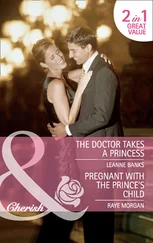She had been so high: the future Queen. Now she was still high, at least with the people we were meeting on the street, and the papers said she was a phenomenon – the looks of a supermodel and the heart of a saint. But I knew the truth.
I had seen many saintly things done in her name, and even if she was not exactly saint material herself – as she would be quick, even too quick, to agree – she had certainly done a lot of suffering. Not all of it had been done in public either, as some would have you believe. Now, however, she was floundering. Where once she had been the ideal young wife and mother, now she was a self-proclaimed adulteress. Where once she had been worshipped by charities, now she was worshipped for her photo-spreads. Where once she had summoned Air Force jets, now she cadged lifts in planes smelling of rich men’s cologne.
True, there were always going to be causes begging for this kind of celebrity patronage; and she had built up deep reserves of public sympathy. She still had that magical forgivability . But I knew these were the gifts more of others’ mistakes than of her shining virtues. I knew she had begun to believe her own publicity, just as I was believing it less and less. I feared that others, like me, were every day seeing more of the steady fraying of her fragile mental stability, and I felt there was now no way back to the happy certainties of my early days at the Palace.
How had it all changed? Eight years earlier it had all been so different – another world, almost another universe.
Autumn 1987. Somewhere on the long journey from Scotland I had lost my cuff links. Summoned from the frigate Arethusa while she was pausing in her patrol to refuel in a stormy west-coast sea loch, I had taken a boat, two buses, an aeroplane and a taxi to reach the Kensington hotel that was my base for the coming ordeal. Along the way the cuff links, with their family crest and a wealth of sentimental value, had disappeared, never to return.
Some frantic improvisation was called for. Dejectedly I substituted collar studs, one of the archaic pieces of kit which gave the Navy its charm for me. It seemed a bad omen, not least because in those days any meeting with royalty was a signal for sartorial precision of the highest order. This was no ordinary meeting either: it was a job interview. By some quirk of fate, I had been chosen – along with five others – as a candidate to be the next equerry to the Princess of Wales.
I knew little about what an equerry actually did, but I did not greatly care. I already knew I wanted to do the job. Two years on loan to the royal household would surely be good for promotion, and even if it was not, it had to be better than slaving in the Ministry of Defence, which was the most likely alternative.
I wondered what it would be like to work in a palace. Through friends and relatives I had an idea it was not all red carpets and footmen. Running the royal family must involve a lot of hard work for somebody, I realized, but not, surely, for the type of tiny cog that was all I expected to be.
In the wardroom of the frigate, alongside in Loch Ewe, news of the signal summoning me to London for interview had been greeted with predictable ribaldry and a swift expectation that I therefore owed everybody several free drinks.
Doug, our quiet American on loan from the US Navy, spoke for many. He observed me in sceptical silence for several minutes. Then he took a long pull at his beer, blew out his moustache and said, ‘Let me get this straight. You are going to work for Princess Di?’
I had to admit it sounded improbable. Anyway, I had not even been selected yet. I did not honestly think I would be. ‘ Might work for her, Doug. Only might . There’s probably several smooth Army buggers ahead of me in the queue. I’m just there to make it look democratic.’
The First Lieutenant, thinking of duty rosters, was more practical. ‘Whatever about that, you’ve wangled a week ashore. Jammy bastard!’ Everyone agreed with him, so I bought more drinks.
While these were being poured, my eye fell on the portraits hanging on the bulkhead. There were the regulation official photographs of the Queen and Prince Philip, and there, surprisingly, was a distinctly nonregulation picture of the Princess of Wales, cut from an old magazine and lovingly framed by an officer long since appointed elsewhere. The picture had been hung so that it lay between the formality of the official portraits and the misty eroticism of some art prints we had never quite got round to throwing away. The symbolic link did not require the services of one of the notoriously sex-obsessed naval psychologists for interpretation.
As she looked down at us in our off-duty moments the Princess represented youth, femininity and a glamour beyond our grey steel world. She embodied the innocent vulnerability we were in extremis employed to defend. Also, being royal, she commanded the tribal loyalty our profession had valued above all else since the days of King Alfred. In addition, as a matter of simple fact, this tasty-looking bird was our future Queen.
Later, when that day in Loch Ewe felt like a relic from another lifetime, I often marvelled at the Princess’s effect on military people. That unabashed loyalty symbolized by Arethusa ’s portrait was typical of reactions in messes and barracks worldwide. Sometimes the men gave the impression that they would have died for her not because it was their duty, but because they wanted to. She really seemed worth it.
So this is where she lives, I thought. I stood by the gates to Kensington Palace (or ‘KP’ as I came to call it) and looked up the long drive to where another set of gates – the security barrier – guarded the entrance to what is in fact a kind of royal compound.
The usual picture the public sees of KP is only one short face of a rectangular complex of buildings. Behind this facade – the favoured backdrop of TV reporters doing a Princess Di story – lies a warren of courtyards and gardens. Around these are an assortment of grand state apartments and smaller private apartments where the Waleses, Princess Margaret and other royal people have their London homes.
I suppose, if you have to live in a palace, this is the one to choose, in London at least. It sits at one end of Hyde Park, and if you look out of a window facing north, east or south the view is mostly of trees and grass. If you look west you can see the smart houses in ‘Millionaires’ Row’. Insulated from the noise of London’s traffic, I discovered that it was a tranquil spot, especially in summer. On a fine day the only noise was of birds and crackling police radios – sometimes punctuated by the shouts of William and Harry riding their bikes, or by the penetrating laughter of the Princess of Wales, as she stood at the front door telling a new joke to her personal protection officer before revving up her convertible and racing off.
I had imagined that the heir to the throne and his family would live somewhere elegant and spacious, in an atmosphere of restrained grandeur. I pictured French windows leading onto a lawn and perhaps a smaller version of the terrace I knew they had at Buckingham Palace. In fact, their apartment did not have much of a view at all. Tucked into the heart of the Palace complex, it was surprisingly dark. The Princess had a love–hate relationship with it. It was convenient for her public work and for shopping, and it was secure. But by 1987 it was the backdrop to a dying marriage and its walls had heard too many angry words.
Not only was the apartment dark and viewless, it was also surprisingly small. Everybody could hear everybody else. If you needed to get away from someone, there was just not enough space. The reception rooms were no bigger than you would expect in any smart town house and the private quarters were very unpalatial. Although I did not yet know it, the Prince had already moved out of the matrimonial bed and into his dressing room.
Читать дальше












